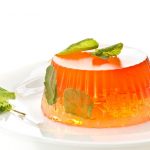Agar is an important polysaccharide extracted from red algae. It is classified as a marine polysaccharide and belongs in the same class as alginate.
Agar is widely used as a plating medium for growing a variety of micro-organisms especially bacteria. It serves in the cosmetics, biochemical, pharmaceutical and medicine, and food industry as a thickening agent, emulsifier and coagulant (Wang et al., 2004; Li et al., 2007). When prepared as a solution, agar imparts high viscosity and at sufficient concentration has good gelling ability.
Chemically, it has a repeating structure of β‐1,4‐D‐galactopyranosy and l‐α‐1,3‐L‐galactopyranose (Hu et al., 2006; Enoki et al., 2010). One of the materials produced from agar polysaccharide is agar oligosaccharide (AOS) which is a smaller molecular oligosaccharide linked by repeated units of agarobiose. The molecule contains a high number of carboxyl and hydroxyl groups which means it can coordinate metal ions very easily ((Kazłowski et al., 2008; Hong et al., 2017).
The short oligosaccharides are highly water soluble. AOS has its own antioxidant activity and is absorbed very easily through the gut lining (Chen et al., 2005; Koti et al., 2013; Higashimura et al., 2013). It is also a good vehicle for metal absorption including iron. Some recent research suggests an agar oligosaccharide–iron (III) complex would make the ideal vehicle for delivery of this important mineral to those suffering anaemia.
References
, & (2005). The preparation and bioactivity research of agaro‐oligosaccharides. Food Technology & Biotechnology, 43, pp. 29‐36.
, , , , & (2010). Oligosaccharides from agar inhibit pro‐inflammatory mediator release by inducing heme oxygenase 1. Journal of the Agricultural Chemical Society of Japan, 74, pp. 766–770
, , et al. (2013). Oligosaccharides from agar inhibit murine intestinal inflammation through the induction of heme oxygenase‐1 expression. Journal of Gastroenterology, 48, pp. 897–909 https://link.springer.com/article/10.1007%2Fs00535-012-0719-4
, , , , & (2017). Toxicological evaluation of neoagarooligosaccharides prepared by enzymatic hydrolysis of agar. Regulatory Toxicology and Pharmacology, 90, pp. 9–21. https://doi.org/10.1016/j.yrtph.2017.08.001
, , , , & (2006). Prebiotic effects of neoagaro‐oligosaccharides prepared by enzymatic hydrolysis of agarose. Anaerobe, 12, pp. 260–266 https://doi.org/10.1016/j.anaerobe.2006.07.005
, & (2008). Separation and quantification of neoagaro‐ and agaro‐oligosaccharide products generated from agarose digestion by beta‐agarase and hcl in liquid chromatography systems. Carbohydrate Research, 343, pp. 2443–2450 https://doi.org/10.1016/j.carres.2008.06.019
, & (2013). Repeated batch production of agar‐oligosaccharides from agarose by an amberlite IRA‐900 immobilized agarase system. Biotechnology and Bioprocess Engineering, 18, pp. 333–341.
, , et al. (2007). A simple method of preparing diverse neoagaro‐oligosaccharides with beta‐agarase. Carbohydrate Research, 342, pp. 1030–1033. https://doi.org/10.1016/j.carres.2007.02.008
, , & (2004). Anti‐oxidation of agar oligosaccharides produced by agarase from a marine bacterium. Journal of Applied Phycology, 16, pp. 333–340 (Article).

Leave a Reply